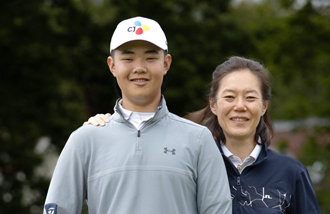Juggumi

Squid, octopus, nakji (long-armed octopus), and juggumi (short-armed octopus) all have something in common: their legs are attached to their heads, and their bodies are on the top of their heads. They are all classified as cephalopoda. But they differ in the number of legs. Squid have 10, and the rest have eight. Calamari and cuttlefish have 10 legs like squid.
Octopus, nakji, and juggumi have similar appearances as well. But their arms are very different in terms of power. While the arms of nakji and octopus feebly droop down outside the water, the juggumis short arms have the strength to push the body upright, even if only for a second.
How daring. I can see why fisherfolk enjoy spring juggumi so much.
At the time of the year when gentle spring breezes come off the sea to drift along red camellia flowers, fishermen in Hongwon Port in Seo-myeon, Seocheon-gun, South Chungcheong Province are busy catching juggumi.
Juggumi is produced along the entire west coast of Korea in spring, but juggumi caught in Seo-myeon are the most prized.
The sea and tideland are well-preserved. The quantity and taste [of Seo-myeon juggumi] is the best, said juggumi catcher Kim In-hwan. With the neighboring Maryang-ri residents, they hold a camellia-juggumi festival every year. This year, the festival began on March 25 and continues to April 7.
There are few restaurants in Hongwon Port that do not serve juggumi. Dozens of fishing boats bring in hundreds of kilograms of juggumi every day. Glass tanks in restaurants get murky with juggumi ink. Juggumi stick to the glass and stare at the world around them.
I get on a juggumi fisherboat. After 10 minutes, the boat stops its engine. I pull up one of dozens of buoys on the spot. Empty shells of spiral shellfish are tied up along the rope, which is fixed to the buoy. By winching the rope, juggumi catching begins.
Juggumis hiding inside the shells reach out an arm wondering what is happening. In a split second, fishermen poke the juggumi out with a rake. It drops on the deck and stands bolt upright.
This catching method is called sorabang. The shells are tied at one-meter intervals along the rope. Some 5,000 to 10,000 shells are hung on a rope, which is five to 10 kilometers long. A rope is winched in once every two to three days, and every five shells contain a single juggumi on average. Juggumi go inside the shells to lay eggs.
Juggumi season ends in mid June. But juggumi is not the only gourmets delight in this season. We have everything, say fisherfolk in Hongwon Port. It is worth remembering. In May, you can taste wild flatfish and porgy. They are not farmed but grow in the wild. Large flatfish over seven kilograms are not rare. A wild flatfish festival is held at the end of each May.
Then blue crab season begins. Blue crabs in Hongwon Port are famous for their wonderful flavor. July and August are closed to fishing. Autumn is gizzard shad season. Another festival for gizzard shads is held from the end of September to early October. They are shipped to South coast region.
In addition to the variety of seafood, laver is another specialty of this blue belt. It constitutes 86 percent of total production of South Chungcheong Province and half of all national production. It is exported to other regions, so look for Seocheon laver in your neighborhood grocery store.
On the beach of Maryang-ri where the festival is held stands a small hill covered with a 500 year-old camellia tree. Dongbaek pavilion is located on top of the hill. Dont forget to drop in there and watch the glowing sky and setting sun on the horizon dotted with islands. It is the highlight of the Seocheon camellia-juggumi festival.
summer@donga.com





